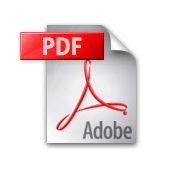Technical Writing – How to Use the PDF Format Correctly for Print and Online Publications
PDF (which stands for “Portable Document Format”) is one of the most widely used document formats in technical writing.
PDF rose out of a real need to read documents created by proprietary software on all kinds of different operating systems and browsers. An advertisement illustration created by Illustrator could not be viewed by the receiver if she also did not have a copy of the Illustrator installed on her machine.
All that difficulties ended with the invention of the miraculous PDF format. When a document or image is converted into PDF it becomes rock solid since its look does not change when transmitted from one machine to another. It also becomes 100% accessible since any machine that has the free Adobe Acrobat PDF Viewer can view it the way it was intended to be viewed by its author.
 The difficulty, however, emerges when a PDF document, which is basically a “book” made up of “pages,” is uploaded to a web site. A computer monitor usually has a landscape orientation whereas a “page” has a portrait orientation. This means usually the whole PDF page cannot fit into a single screen and the user is forced to scroll the page down to read all of it.
The difficulty, however, emerges when a PDF document, which is basically a “book” made up of “pages,” is uploaded to a web site. A computer monitor usually has a landscape orientation whereas a “page” has a portrait orientation. This means usually the whole PDF page cannot fit into a single screen and the user is forced to scroll the page down to read all of it.
What’s worse, if the page layout has more than one columns, then the user first scrolls down to read the rest of the first column; then scrolls up to the top of the second column; and scrolls down one more time to read the rest of the second column; and this up-and-down scrolling motion continues throughout the document. Imagine the extra effort required to read a single page on the monitor if a PDF document has THREE columns per page!
Thus it makes eminent sense to design your PDF documents with the final display mode in mind.
If the document is meant to be printed and read afterward, the classical “page” metaphor and design serves well. But if the document is meant to be read online on a monitor, then you need to reduce the number of words on the single-column page so that it will fit into a single 15” screen. That would eliminate the vexing need to scroll up and down the page to read the content.
